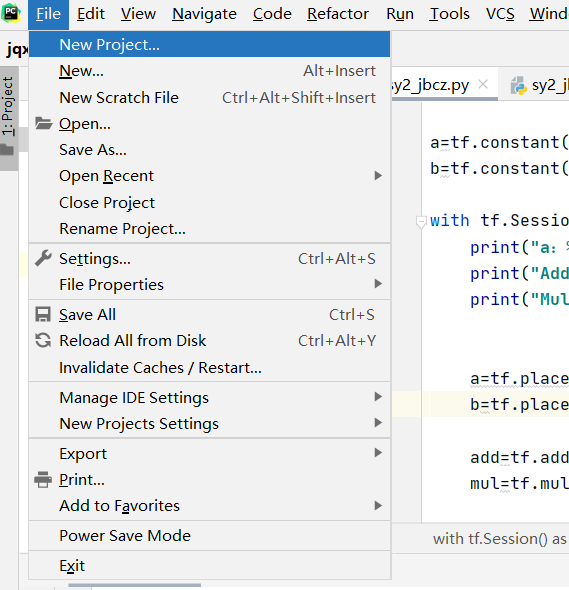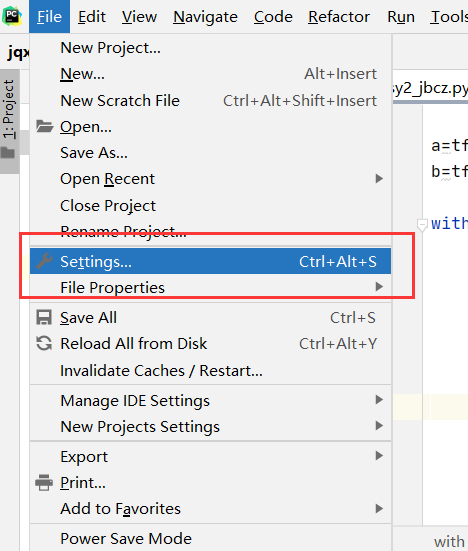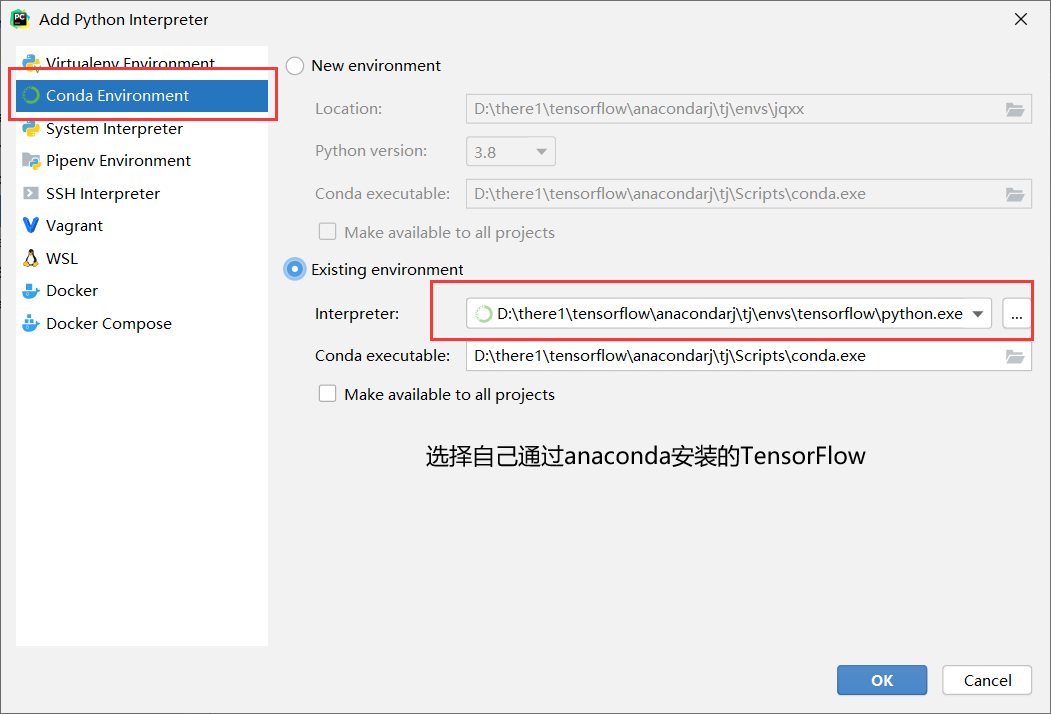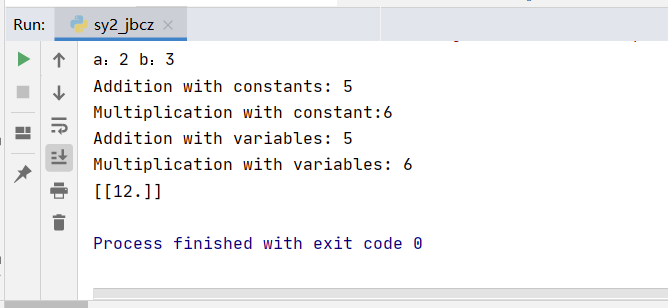原理简介
TensorFlow 是一个编程系统,使用图来表示计算任务,图中的节点被称之为 op (operation 的缩写)。一个 op 获得 0 个或多个 Tensor,执行计算产生 0 个或多个 Tensor。每个 Tensor 是一个类型化的多维数组。例如,你可以将一小组图像集表示为一个四维浮点数数组,这四个维度分别是 [batch, height, width, channels]。
一个 TensorFlow 图描述了计算的过程,为了进行计算,图必须在会话里被启动。会话将图的 op 分发到诸如 CPU 或 GPU 之类的设备上,同时提供执行 op 的方法,这些方法执行后将产生的 tensor 返回。在 Python 语言中返回的 tensor 是 numpy ndarray 对象;在 C 和 C++ 语言中返回的 tensor 是 tensorflow::Tensor 实例。
TensorFlow 程序通常被组织成一个构建阶段和一个执行阶段。在构建阶段,op 的执行步骤被描述成一个图;在执行阶段,使用会话执行图中的 op。
使用 TensorFlow,你必须明白 TensorFlow的组件作用:
- 使用图 (graph) 来表示计算任务
- 在被称之为会话 (Session) 的上下文 (context) 中执行图
- 使用 tensor 表示数据
- 通过变量 (Variable) 维护状态
- 使用 feed 和 fetch 可以为任意的操作(arbitrary operation) 赋值或者从其中获取数据
基本操作
1.打开Pycharm,选择Create New Project,创建名为jqxx的项目。

2.重新配置解释器



完整代码

import tensorflow as tf import os os.environ["CUDA_VISIBLE_DEVICES"]="0" a=tf.constant(2) b=tf.constant(3) with tf.Session() as sess: print("a:%i" % sess.run(a),"b:%i" % sess.run(b)) print("Addition with constants: %i" % sess.run(a+b)) print("Multiplication with constant:%i" % sess.run(a*b)) a=tf.placeholder(tf.int16) b=tf.placeholder(tf.int16) add=tf.add(a,b) mul=tf.multiply(a,b) print("Addition with variables: %i" % sess.run(add, feed_dict={a: 2, b: 3})) print("Multiplication with variables: %i" % sess.run(mul, feed_dict={a: 2, b: 3})) matrix1=tf.constant([[3.,3.]]) matrix2=tf.constant([[2.],[2.]]) product=tf.matmul(matrix1,matrix2) result=sess.run(product) print(result)
3.具体步骤
在Python环境,使用import导入TensorFlow模块,别名为tf。
- import tensorflow as tf
- import os
- os.environ["CUDA_VISIBLE_DEVICES"]="0"
4.构造计算图,创建两个常量节点a,b,值分别为2,3,代码如下:
- a=tf.constant(2)
- b=tf.constant(3)
5.创建一个Session会话对象,调用run方法,运行计算图。
- with tf.Session() as sess:
- print("a:%i" % sess.run(a),"b:%i" % sess.run(b))
- print("Addition with constants: %i" % sess.run(a+b))
- print("Multiplication with constant:%i" % sess.run(a*b))
6.使用变量Variable构造计算图a,b
- a=tf.placeholder(tf.int16)
- b=tf.placeholder(tf.int16)
7.使用tf中的add,multiply函数对a,b进行求和与求积操作。
- add=tf.add(a,b)
- mul=tf.multiply(a,b)
8.创建一个Session会话对象,调用run方法,运行计算图。
- with tf.Session() as sess:
- print("Addition with variables: %i" % sess.run(add,feed_dict={a:2,b:3}))
- print("Multiplication with variables: %i" % sess.run(mul,feed_dict={a:2,b:3}))
9.构造计算图,创建两个矩阵常量节点matrix1,matrix2,值分别为[[3.,3.]],[[2.],[2.]],代码如下:
- matrix1=tf.constant([[3.,3.]])
- matrix2=tf.constant([[2.],[2.]])
10.构造矩阵乘法运算,
- product=tf.matmul(matrix1,matrix2)
11.创建一个Session会话对象,调用run方法,运行计算图。
with tf.Session() as sess:
- result=sess.run(product)
- print(result)
12.运行结果:

